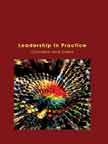BISWA: Fostering Inclusive Growth through Microfinance
|
ICMR HOME | Case Studies Collection
For delivery in electronic format: Rs. 500; For delivery through courier (within India): Rs. 500 + Shipping & Handling Charges extra » Leadership and Entrepreneurship Case Studies » Short Case Studies » View Detailed Pricing Info » How To Order This Case » Business Case Studies » Case Studies by Area » Case Studies by Industry » Case Studies by Company 
Custom Search
Please note: |
|||||||
Microfinance in India
In the mid-1990s, about 70% of India's population lived in the rural areas, which accounted for only 30% of the bank deposits. About 70% of the rural poor did not have bank accounts and 87% of them did not have access to credit from banks.4 In the same period, the share of non-institutional agencies including traders, money lenders, friends, and relatives in the outstanding cash dues of rural households was 36%.5 The situation among the urban poor was not much better. In the past, both public and private banks in India perceived rural banking as a high-risk, high-cost activity i.e. it was seen as being marked by high transaction costs and high levels of uncertainty...
3] Rs.= Indian rupees (INR). As of July, 2010, US$1 was approximately equal to Rs. 46.90. 
Custom Search
|
Case Studies Links:-
Case Studies,
Short Case Studies,
Simplified Case Studies.
Other Case Studies:-
Multimedia Case Studies,
Cases in Other Languages.
Business Reports Link:-
Business Reports.
Books:-
Textbooks,
Work Books,
Case Study Volumes.







